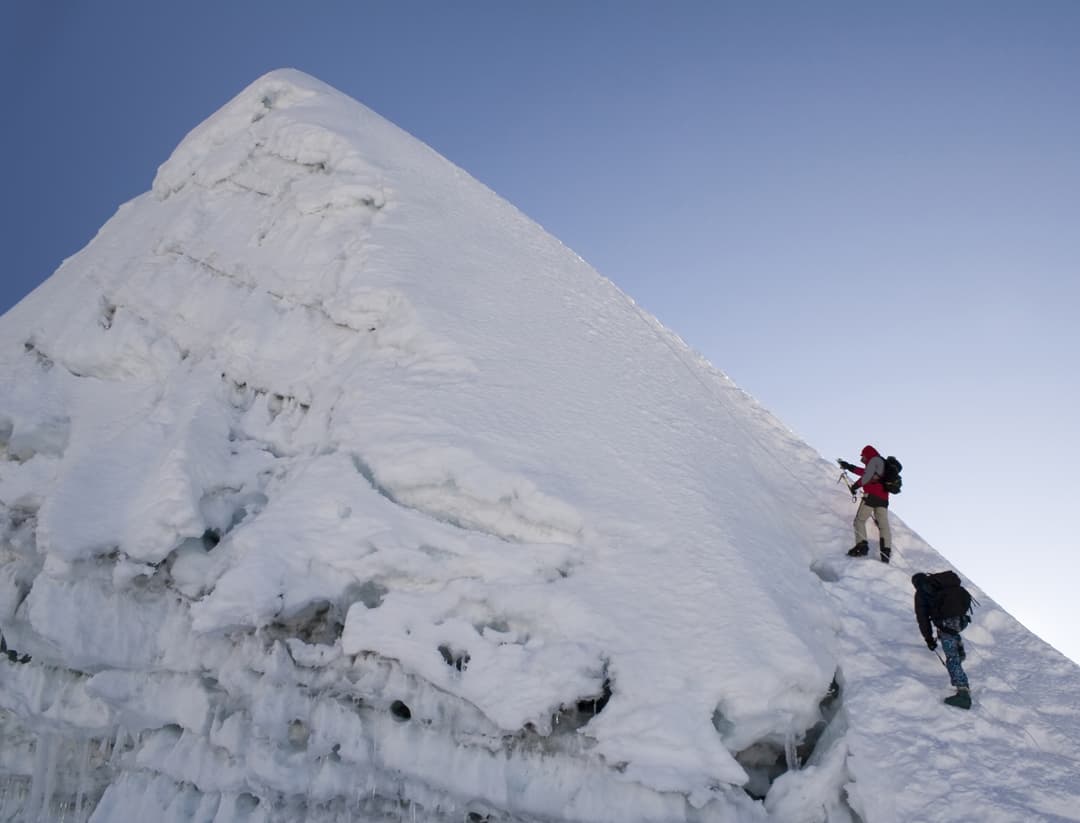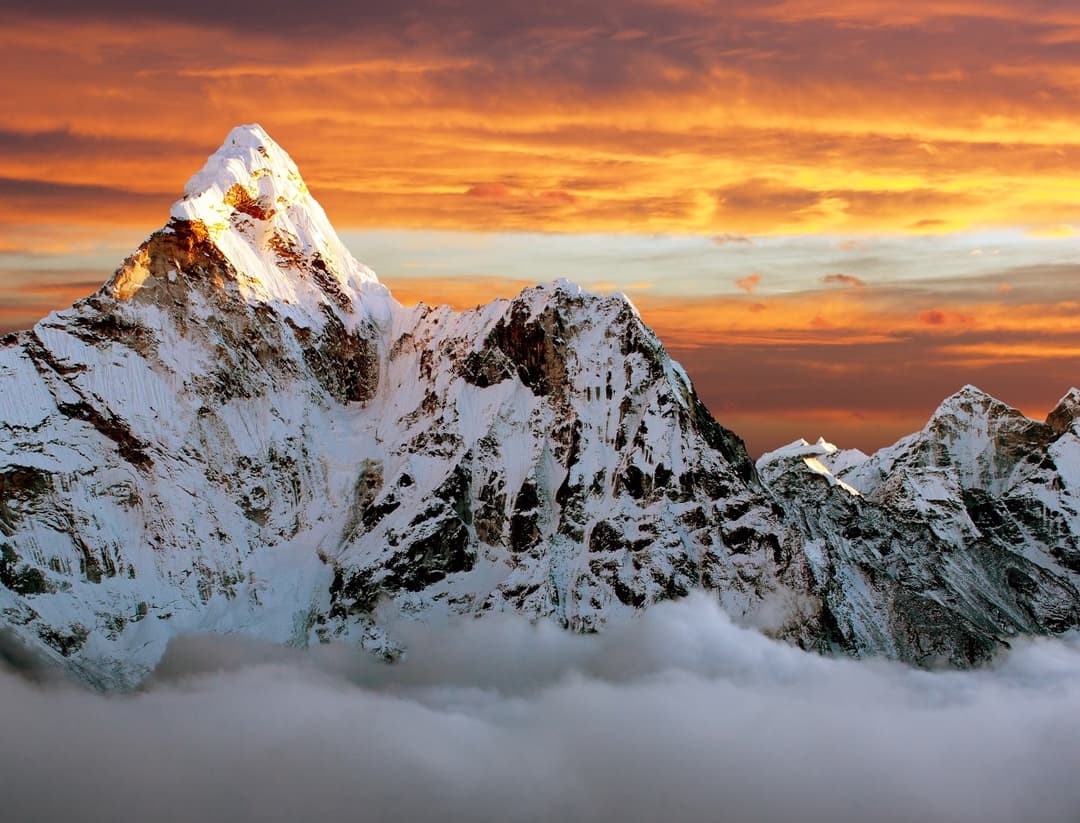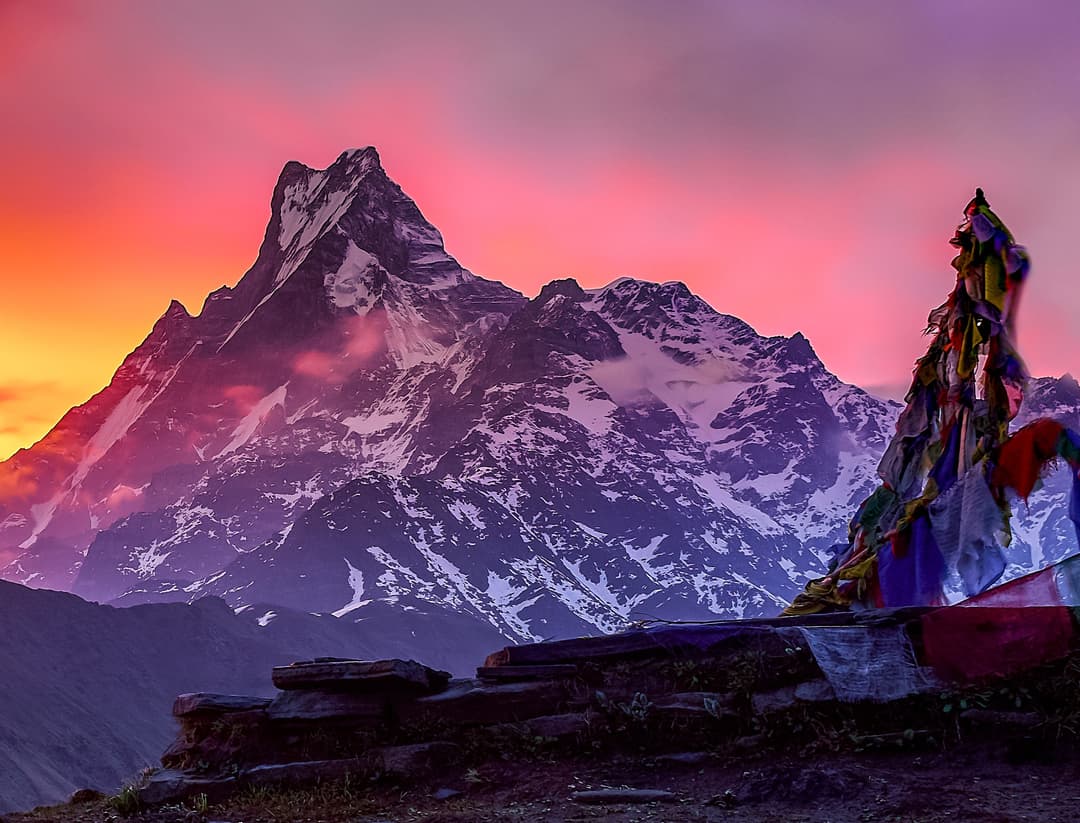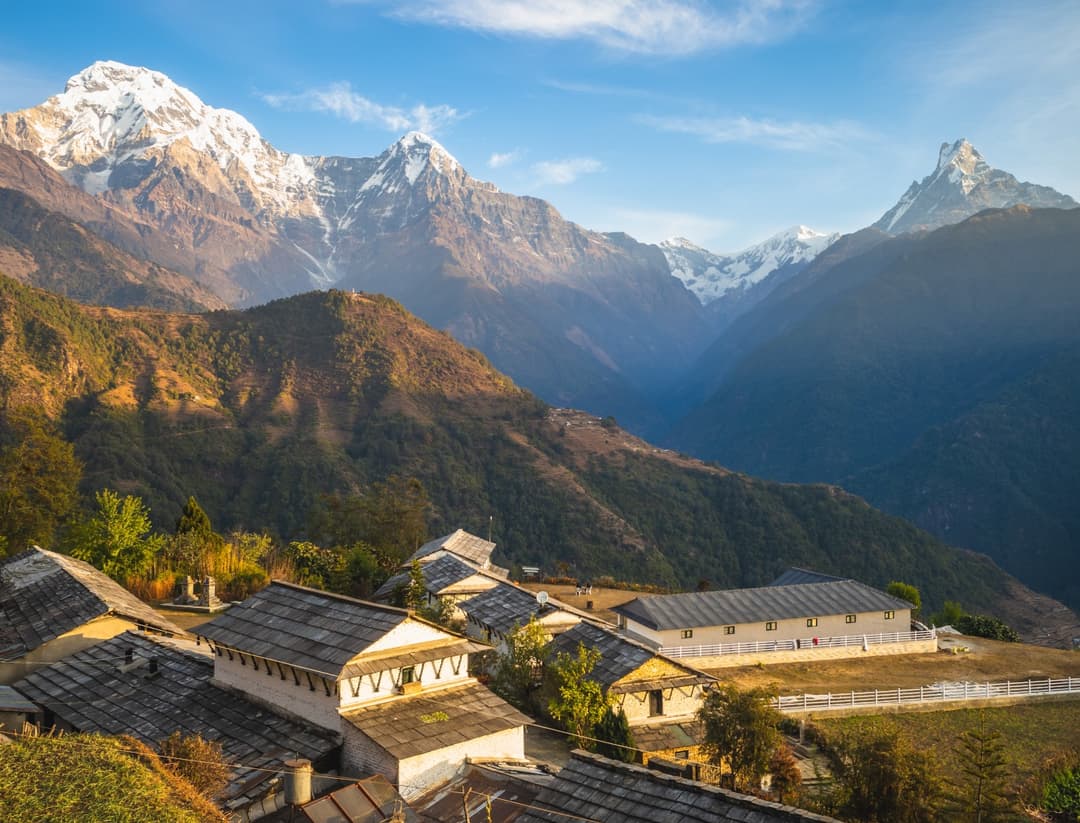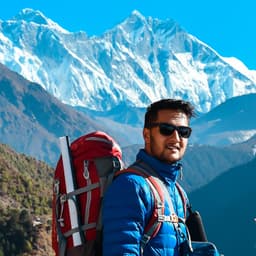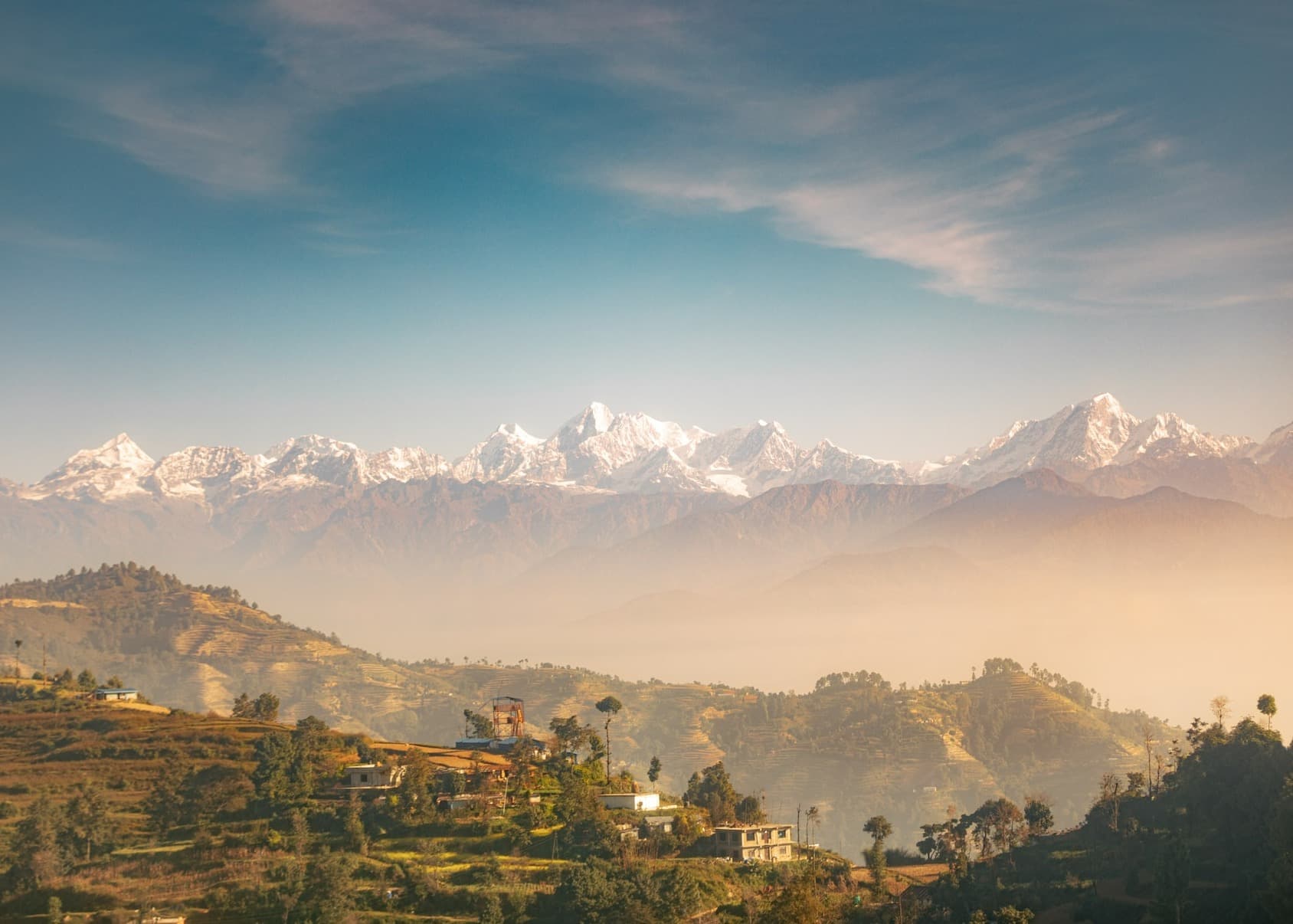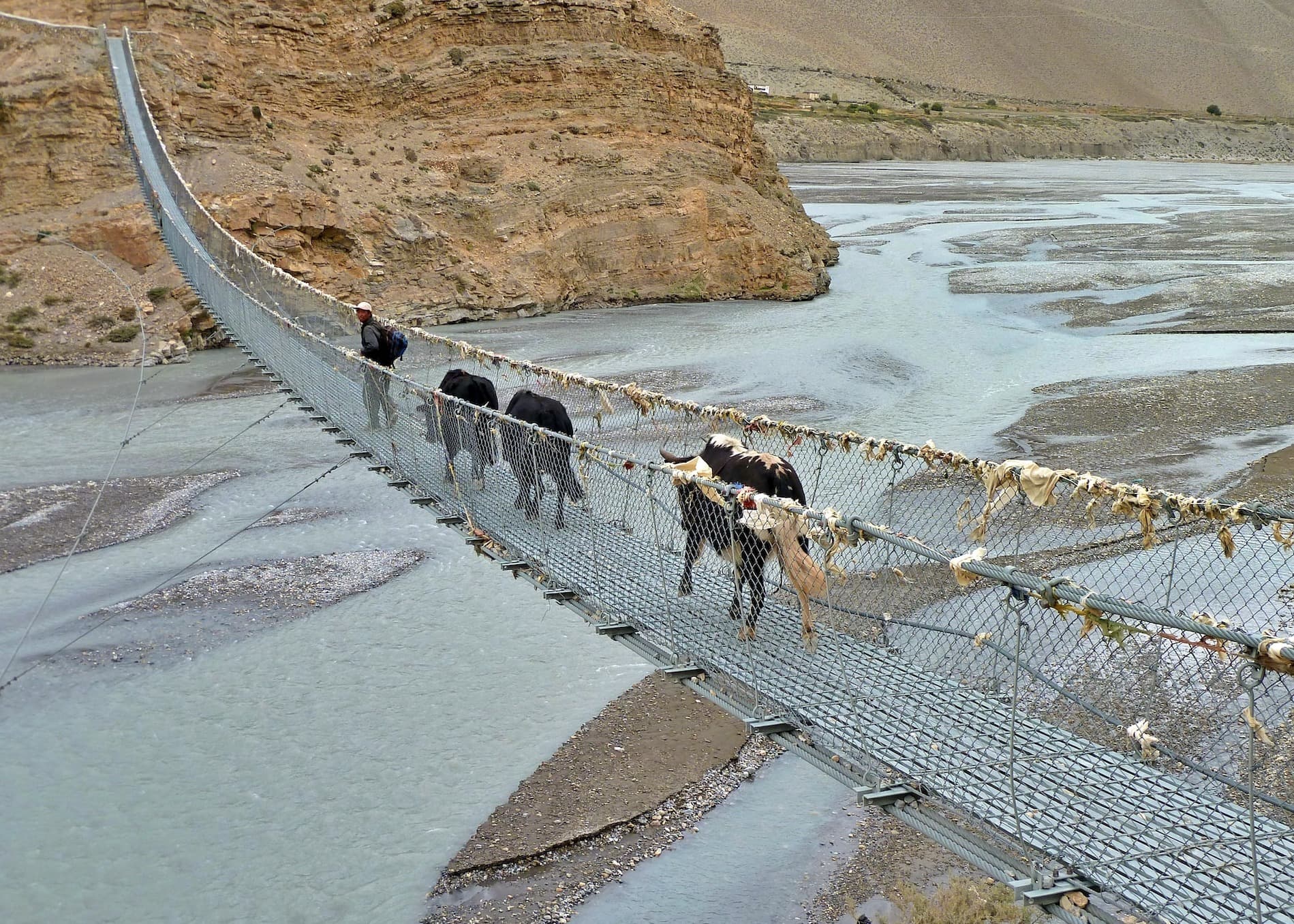Are you planning to go hiking in Nepal? Look no further. Nepal is a paradise for hikers, with its towering peaks, picturesque routes, and a plethora of hiking options. In this blog post, we will provide you with a comprehensive guide to plan your hiking and walking trip in Nepal.
Did you know that around 225,000 tourists choose Nepal as their hiking destination every year? Our guide to hiking in Nepal comprises seven preparatory steps that answer the most commonly asked questions we receive from hikers visiting Nepal. Our ultimate goal is to help you have the best possible hiking experience in Nepal!
Best Time for Hiking in Nepal
Nepal experiences four distinct seasons: spring (March-May), summer (June-August), autumn (September-November), and winter (December-February). Of these, spring and autumn are the ideal seasons for hiking. The weather is perfect, and the temperatures are comfortable for walking - not too hot, not too cold, and not too wet.
On the other hand, summertime is the least favorable season for hiking in Nepal. It's the peak of the monsoon season, and it rains heavily everywhere, making hiking trails slippery and dangerous. In winter, it can get very cold in the higher elevations of the mountains, and many guesthouses are closed. People tend to migrate to cities during this time.
April and October are the busiest months in Nepal, and hiking trails can get crowded, affecting the overall experience. However, weather-wise, April and October are the best months to hike in Nepal. The weather is pleasant, and the skies are usually clear, offering stunning views of the Himalayas.
In conclusion, the best time for hiking in Nepal is during the spring and autumn seasons, particularly in April and October.
Main Trekking Regions in Nepal
Nepal boasts several incredible trekking regions, but the four most popular ones are the Everest, Annapurna, Langtang, and Manaslu areas. These regions are best explored during the spring (March-May) and autumn (September-November) seasons, although winter treks (December-February) are possible on some routes in these areas.
Everest Region
The Everest region, home to the highest mountain in the world, Mount Everest, is undoubtedly the most sought-after trekking destination in Nepal. But there's more to this region than just the mighty peak standing tall at 8,848 meters. The region also encompasses the Sagarmatha National Park, which offers unique landscapes for exploration.
Popular places to trek in this region include Lukla, Tengboche, Lobuche, and the holy Gokyo Lake, a stunning turquoise-colored gem nestled amidst towering mountains. The region is also known for its other high peaks such as Cho Oyu, Ama Dablam, Nuptse, and Makalu, which offer incredible vantage points like Kala Patthar. During the peak season, visitors can also witness the beautiful rhododendron forests in full bloom.
Some of the most popular treks in the Everest region include the:
Everest Base Camp Trek | Everest Three Pass Trek | Everest Short Trek | Budget Everest Base Camp Trek | Everest Base Camp Trek with Island Peak Climbing | Gokyo and Renjo-La Pass Trek | Gokyo Lake with EBC Trek | Everest Base Camp Heli Trek.
Annapurna Region
The Annapurna region is one of the most popular trekking destinations in Nepal, known for its diverse landscapes, stunning mountain vistas, and rich cultural experiences. Trekking in the Annapurna region offers a wide range of routes and options suitable for both beginners and experienced trekkers.
The Annapurna Circuit Trek is a classic choice, encircling the entire Annapurna massif. This trek takes you through a variety of terrains, from lush green valleys and terraced fields to arid high-altitude deserts. The highlight of the circuit is Thorong La Pass, standing at an elevation of 5,416 meters, which offers breathtaking panoramic views.
For those seeking a shorter trek, the Annapurna Base Camp Trek is a fantastic option. This trek takes you to the base camp of Mount Annapurna, surrounded by towering peaks and dramatic glaciers. The trail passes through picturesque Gurung villages, allowing you to experience the warm hospitality and rich cultural traditions of the local communities.
Other popular treks in the Annapurna region include the Ghorepani Poon Hill Trek, which offers stunning sunrise views over the Annapurna and Dhaulagiri ranges, and the Mardi Himal Trek, which takes you off the beaten path to the base camp of Mardi Himal.
Throughout the region, trekkers can enjoy comfortable tea houses, offering a cozy place to rest and savor delicious local cuisine. The Annapurna region is also home to diverse wildlife, including Himalayan thar, langur monkeys, and various bird species.
With its breathtaking scenery, diverse trekking routes, and cultural richness, the Annapurna region continues to attract adventurers from around the world, providing an unforgettable trekking experience in the heart of the Himalayas.
Langtang Area: A Gem for Adventure Enthusiasts
The Langtang region is a popular trekking destination in Nepal, known for its breathtaking landscapes, rich cultural heritage, and warm hospitality. Located to the north of Kathmandu, the region offers a diverse range of trekking routes that cater to different preferences and fitness levels.
Langtang Valley Trek is one of the prominent treks in the region, taking you through picturesque villages, lush forests, and towering peaks. The trail offers stunning views of the Langtang Himalayan range, including Langtang Lirung (7,227 meters), and allows trekkers to immerse in the local Tamang and Sherpa cultures.
Another notable trek in the Langtang region is the Gosainkunda Trek, which combines natural beauty with religious significance. The trail leads to the sacred Gosainkunda Lake, believed to be the abode of Lord Shiva. This trek offers panoramic mountain views, pristine lakes, and the opportunity to witness religious festivals and rituals.
Helambu Trek, a relatively easier trek that takes you through charming Sherpa and Tamang villages. The trail winds through rhododendron forests, terraced fields, and picturesque valleys, offering stunning views of the Langtang Himalayas. The cultural encounters along the way provide insight into the traditional lifestyles and customs of the local communities.
Additionally, the Langtang region is a gateway to the challenging and rewarding trek to Tserko Ri. This trek rewards adventurers with breathtaking views of Langtang Lirung, Dorje Lakpa, and other magnificent peaks, as well as an up-close encounter with the local Tamang communities.
Remote Treks: Hidden Gem of Nature
Nepal is a paradise for trekkers, offering a plethora of remote and breathtaking destinations for those seeking an off-the-beaten-path adventure.
Located in the far west region, Upper Dolpo Trek is a hidden gem. This remote area is renowned for its untouched landscapes, ancient Buddhist monasteries, and the unique culture of the Dolpo people. Trekkers traverse through rugged terrain, crossing high passes and exploring pristine lakes like Phoksundo. The region's isolation has helped preserve its natural beauty and traditional way of life.
Situated in the Gorkha district, the Manaslu Circuit Trek offers a challenging and less crowded alternative to the famous Annapurna Circuit. Trekkers journey around the majestic Mt. Manaslu, the eighth highest peak in the world, passing through diverse landscapes, charming villages, and Tibetan Buddhist monasteries. The trail is rich in cultural heritage and rewards adventurers with breathtaking views of snow-capped peaks.
Kanchenjunga Base Camp Trek, Nestled in eastern Nepal, the Kanchenjunga region is home to the third highest mountain in the world. This trek takes you to the base camp of Mt. Kanchenjunga, offering a thrilling experience amidst pristine forests, picturesque valleys, and cascading waterfalls. Trekkers get a chance to interact with indigenous communities like the Limbus and experience their unique traditions and warm hospitality.
Accommodation and Food Options While Hiking in Nepal
Nepal's popular hiking destinations, such as Everest and Annapurna, have good infrastructure and facilities. However, the more remote and off-the-beaten-track you go, the fewer amenities you can expect. On popular trails like the Everest Base Camp trek or the Annapurna Circuit, most guesthouses have hot showers, electricity, and Wi-Fi. Some even have attached western flush toilets, while others may only have outdoor squat toilets. Generally, you'll have to pay extra for amenities like hot showers, Wi-Fi, and charging facilities.
The availability of food on a trek depends on the region. On popular treks like Everest Base Camp and the Annapurna Sanctuary, the variety of the menu is quite impressive. You can expect dishes from Indian, Nepalese, Chinese, and Western cuisines. Some places like Namche Bazaar, Manang, and Ghandruk even have German bakeries, Italian coffee shops, and pizzerias where you can indulge in a slice of chocolate cake, a cinnamon roll, a pizza, or a cappuccino.
However, if you venture off the beaten path on routes like Manaslu, Panchase, Mohare Danda, or Upper Mustang, your food options may be limited to dal bhat (a traditional Nepalese dish of rice and lentil soup), noodles, and rice dishes.
Regarding accommodation, guesthouses and lodges are the most common types of lodging available on trekking routes in Nepal. They are basic, but comfortable and provide a great way to meet fellow trekkers. You can also opt for tea houses, camping, or homestays in some areas.
In conclusion, while hiking in Nepal, you can expect a range of accommodation and food options, depending on the region you are in. Popular routes offer a variety of cuisines and amenities, while more remote routes may have limited options. Nonetheless, Nepal's beautiful scenery, friendly people, and unique cultural experiences make hiking in Nepal a truly unforgettable experience.
Drinking Water in Nepal: What You Need to Know
It's important to note that tap water and river water in Nepal are not safe to drink. As a hiker, you have several options for safe drinking water, including bottled water, water purification tablets, or boiling water. If you choose to boil water, remember that at higher altitudes, it takes longer to boil than at sea level, so make sure you boil it long enough to kill any harmful bacteria.
If you're relying on your camp crew to boil water for you, ensure that they are following these guidelines. When purchasing bottled water, make sure that the cap has not been tampered with, as some unscrupulous water vendors fill empty bottles with tap water.
Staying hydrated is crucial during your hiking trip in Nepal to avoid dehydration. Be sure to drink plenty of water, especially during hot weather or when hiking at higher elevations. It's recommended that you carry at least 2 liters of water with you during your hike.
In conclusion, it's important to be cautious about drinking water in Nepal. Stick to bottled water, water purification tablets, or boiled water, and be mindful of the sources of your drinking water to avoid any health risks.
Is it Safe for Women to Travel Solo in Nepal?
Nepal is a safe country, and it's generally safe for women to travel solo to Nepal. Nepalese people are friendly and hospitable, and they are usually willing to help solo travelers. However, unexpected events can happen, and it's always better to err on the side of caution. For this reason, traveling in a group is recommended over solo travel.
When trekking in Nepal, solo female travelers can still be accompanied by a guide, making the journey safer. However, if a solo female traveler does not wish to join a trekking company, it's important to take necessary precautions, such as staying in well-lit areas at night, avoiding isolated areas, and being aware of their surroundings.
Overall, while solo female travel in Nepal is generally safe, it's important to exercise caution and common sense to ensure a safe and enjoyable trip.
Possibilities of Flight Delays or Cancellations and the Need for a Buffer Day
Flight delays and cancellations can occur due to adverse weather conditions or technical problems. During peak trekking seasons in Nepal, the occurrence of flight delays is relatively less compared to winter and summer months. However, it's always advisable to include a buffer day in your itinerary to account for any unforeseen flight delays or cancellations.
A buffer day is an extra day reserved in case of flight delays, ensuring that you don't miss out on your trekking plans. In case your flight is delayed or canceled, you can use the buffer day to adjust your itinerary and ensure that your trekking plans remain unaffected.
In conclusion, flight delays and cancellations can occur due to several reasons, and it's always best to include a buffer day in your itinerary. This extra day can save you from the inconvenience of rescheduling your trekking plans and ensure that you have a hassle-free experience.



